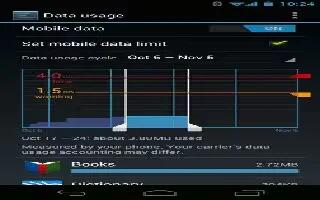You typically dont need to worry about managing apps beyond installing, opening, and using them. But there may be times when you want to know more about whats happening behind the scenes. Continue reading on how to optimize it.
Apps use two kinds of memory: internal storage and RAM. They use internal storage for themselves and any files, settings, and other data they use. They also use RAM (memory designed for temporary storage and fast access) when theyre running.
Android manages and carefully guards the portion of internal storage where the system, apps, and most data for those apps are stored, because this area may contain your private information. Its not possible to view this portion of internal storage when you connect your device to a computer with a USB cable. The other portion of internal storage, where music, downloaded files, and so on are stored, remains visible for your convenience.
Android also manages how apps use RAM. It may cache some things youve been using recently, for quicker access if you need them again, but it will erase the cache if it needs the RAM for new activities.
You affect the way apps use internal storage directly and indirectly in many waysfor example, by:
- Installing or uninstalling apps.
- Downloading files in Chrome, Gmail, and other apps.
- Creating files (for example, by taking pictures).
- Deleting downloaded files or files you created.
- Copying files between your device and a computer via USB or Bluetooth.
- You rarely need to manage the way apps use RAM. But you can monitor apps RAM usage and stop them if they misbehave.
How To Use Apps Screen On Nexus 7
- The Apps screen allows you to adjust several aspects of the way your device uses memory. To view these settings, go to Settings, Wireless & networks, and then Data usage.
- Youll see three tabs at the top of the screen, each displaying a list of apps or their components:
- Downloaded. Displays apps youve downloaded on Google Play or other sources.
- Running. Displays all apps, processes, and services that are currently running or that have cached processes, and how much RAM they are using.
- The graph at the bottom of the Running tab shows the total RAM in use and the amount free. At the top right of the screen, touch Show cached processes or Show running services to switch back and forth.
- All. Displays all apps that came with Android and all apps you downloaded on Google Play or other sources.
- To switch the order of the lists displayed in the Downloaded or All tabs, touch Menu, and then Sort by name or Sort by size. To view details about an app or other item listed under any tab, touch its name. The information and controls available vary among different types of apps, but commonly include:
- Force stop button: Stops an app that is misbehaving. Stopping an app, process, or service may cause your device to stop working correctly. You may need to restart your device after doing this.
- Uninstall button: Deletes the app and all of its data and settings.
- Disable button: Prevents the app from running, but does not uninstall it. This option is available for some apps and services that cant be uninstalled.
- Clear data button: Delete an apps settings and other data without removing the app itself.
- Clear cache: If the app stores data in a temporary area of the tablets memory, lists how much information is stored, and includes a button for clearing it.
- Launch by default: If you have configured an app to launch certain file types by default, you can clear that setting here.
- Permissions: Lists the kinds of information about your tablet and data the app has access to.
